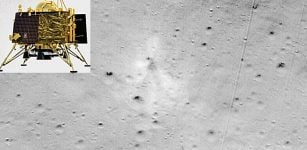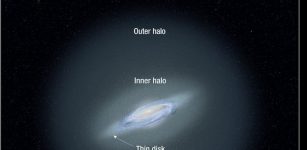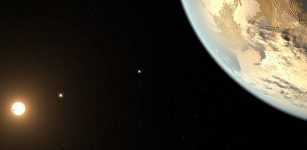Data Collected By NASA’s Juno Shows That Jupiter’s Jet-Streams Are Unearthly
MessageToEagle.com – Atmospheric winds of the gas-giant planet run deep into Jupiter’s atmosphere and last longer than similar atmospheric processes found here on Earth, according to data collected by NASA’s Juno mission.
Additionally, the massive cyclones that surround Jupiter’s north and south poles are enduring atmospheric features and unlike anything else encountered in our solar system.
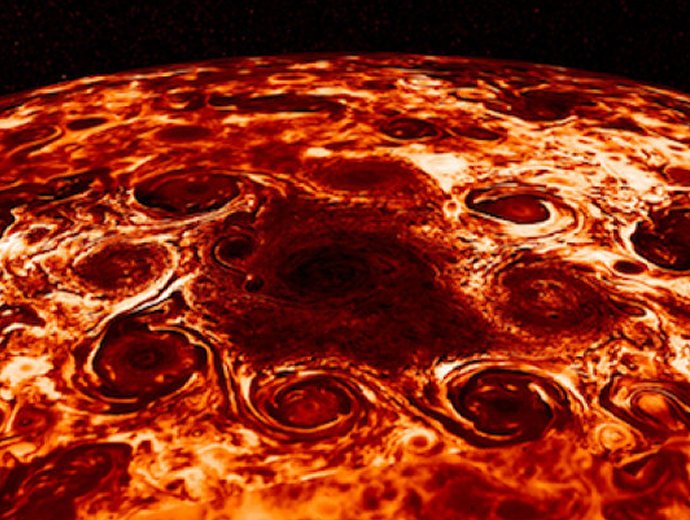
This composite image, derived from data collected by the Jovian Infrared Auroral Mapper (JIRAM) instrument aboard NASA’s Juno mission to Jupiter, shows the central cyclone at the planet’s north pole and the eight cyclones that encircle it. Image credit: Credit: NASA/JPL-Caltech/SwRI/ASI/INAF/JIRAM
“These astonishing science results are yet another example of Jupiter’s curve balls, and a testimony to the value of exploring the unknown from a new perspective with next-generation instruments. Juno’s unique orbit and evolutionary high-precision radio science and infrared technologies enabled these paradigm-shifting discoveries,” said Scott Bolton, principal investigator of Juno from the Southwest Research Institute, San Antonio.
“Juno is only about one third the way through its primary mission, and already we are seeing the beginnings of a new Jupiter.”
The depth to which the roots of Jupiter’s famous zones and belts extend has been a mystery for decades. Gravity measurements collected by Juno during its close flybys of the planet have now provided an answer.
“Juno’s measurement of Jupiter’s gravity field indicates a north-south asymmetry, similar to the asymmetry observed in its zones and belts,” said Luciano Iess, Juno co-investigator from Sapienza University of Rome, and lead author on a Nature paper on Jupiter’s gravity field.
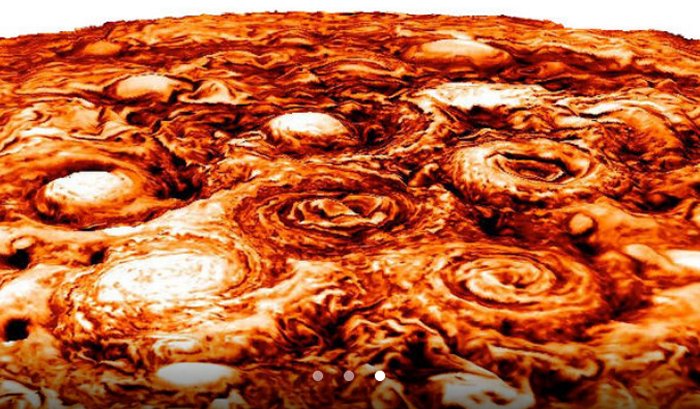
On a gas planet, such an asymmetry can only come from flows deep within the planet; and on Jupiter, the visible eastward and westward jet streams are likewise asymmetric north and south. The deeper the jets, the more mass they contain, leading to a stronger signal expressed in the gravity field. Thus, the magnitude of the asymmetry in gravity determines how deep the jet streams extend.
“Galileo viewed the stripes on Jupiter more than 400 years ago,” said Yohai Kaspi, Juno co-investigator from the Weizmann Institute of Science, Rehovot, Israel,and lead author of a Nature paper on Jupiter’s deep weather layer. “Until now, we only had a superficial understanding of them and have been able to relate these stripes to cloud features along Jupiter’s jets. Now, following the Juno gravity measurements, we know how deep the jets extend and what their structure is beneath the visible clouds. It’s like going from a 2-D picture to a 3-D version in high definition.”
The result was a surprise for the Juno science team because it indicated that the weather layer of Jupiter was more massive, extending much deeper than previously expected. The Jovian weather layer, from its very top to a depth of 1,900 miles (3,000 kilometers), contains about one percent of Jupiter’s mass (about 3 Earth masses).
“By contrast, Earth’s atmosphere is less than one millionth of the total mass of Earth,” said Kaspi “The fact that Jupiter has such a massive region rotating in separate east-west bands is definitely a surprise.”
The finding is important for understanding the nature and possible mechanisms driving these strong jet streams. In addition, the gravity signature of the jets is entangled with the gravity signal of Jupiter’s core.
MessageToEagle.com
Expand for references

